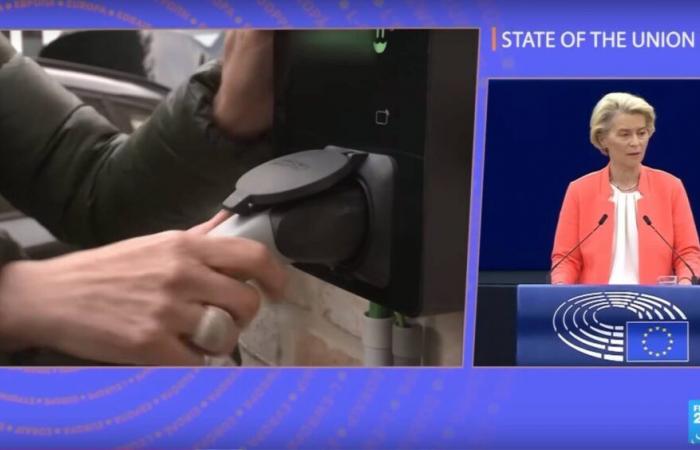Setting the major objectives to achieve carbon neutrality by 2050, the “energy and climate programming law” (LPEC) is a legal obligation, requiring a national consultation and a parliamentary debate every 5 years. Its objectives are then expressed in the National Low Carbon Strategy (SNBC), the National Plan for Adaptation to Climate Change (PNACC) and the Multi-year Energy Program (PPE). These legislative texts should have been published at the end of 2023. Nearly two years late, the new SNBC and PPE were presented by the government on November 4 and are open for consultation for 6 weeks.
Haro on fossil fuels
In line with the European “Green Deal” renamed by the Sapiens Institute “4i Pact” (unrealistic, unfair, unsustainable & useless), France is now banking on a reduction of its territorial emissions by 50% compared to the 1990 level. This objective implies a reduction of 5% per year compared to an average of 1.5% since the beginning of the century. It implies a drastic reduction in the consumption of fossil fuels and is based on a double lever: the electrification of uses (mobility, housing and industry) and the increase in the production of low-carbon electricity. . It was partly declined by Emmanuel Macron during his founding speech in Belfort on February 10, 2022. It would require, among other things, the construction by 2050 of 40 GW of offshore wind, 100 GW of photovoltaic solar as well as 14 EPR2.
Currently representing more than 50% of the French energy mix (according to the World Statistical Review of Energy Institute 2024), fossils will have to be reduced to 42% in 2030 and 30% in 2035. This reduction will have to focus primarily on oil (66% of the fossil share) mainly used in transport. In the medium term, decarbonization will therefore essentially be based on a massive shift from thermal mobility to electric mobility. The objective appears both unrealistic, unsustainable for industry and citizens and above all practically useless in climate terms.
For the past year, the European automobile industry, which has recorded a dizzying drop in EV sales, has been in great difficulty. The reasons are multifactorial: significant increase in EV prices, price of electricity with recharges sometimes becoming more expensive per km traveled than fuels, purely practical reasons linked to autonomy over long distances and the lack of charging stations in particular in big cities, Chinese competition. As a result, Volkswagen and Stellantis are considering closing factories in Germany and Italy, Michelin is laying off workers in France, while the entire European battery industry is in complete disarray. In the absence of massive subsidies, there is little chance that the sector will self-relaunch. Especially since the electrification of mobility can be associated with formidable perverse effects.
The mirage of all-electric automobiles
Despite the “high-speed” electrification of a hyper-subsidized vehicle fleet (90% electric vehicles in 2024), Norway has only reduced its GHG emissions by 10% since 2015 (significantly less than the average). of the EU) while its consumption of diesel & gasoline remained almost stationary. These more than surprising results are attributed to the fact that, alongside the windfall effect on EVs, many motorists have kept a thermal vehicle for long journeys. On the other hand, heavy goods vehicles and utility vehicles, many of which travel the Norwegian roads over thousands of km, have retained their thermal engines.
More generally, the new PPE is part of a more than gloomy climatic atmosphere. While dramatic weather events continue in Europe, global decarbonization is running out of steam. Despite enormous investments in renewables (nearly 7,000 billion dollars over the past ten years), emissions continue to increase while fossil fuels break records year after year. In question, on the one hand, emerging countries for whom human development largely takes precedence over climate-energy objectives but also, the evolution of the World towards a new logic of blocks largely unfavorable to global decarbonization. And on this level the recent election of Donald Trump, whose climate skeptic leanings are known, should not improve the situation. His election could definitively sound the death knell for the Paris Agreement: according to Patrick Pouyanné “the energy transition will go at the pace that the United States decides”. For the fiery CEO of the 5th largest energy group in the world, oil consumption should continue to increase at least for 10 years to land on a plateau of 90 million barrels per day by 2050, a drop of only 10% per year. compared to today.
Stuck between the Chinese hammer and the American anvil, Europe must pull itself together and review its Green Deal from floor to ceiling. To the extent that we are moving inexorably towards a world warmed to +2.7°C, it is essential to transfer a significant part of the resources currently injected into the energy transition towards adaptation. Without this radical decision, Europe risks finding itself defenseless in the face of increasingly critical climate events.
Print, save as PDF this article






